A bump on bottom of foot, also called nodule, lump, cyst or contusion, is a localized episode of swelling, or growth that is apparent on the foot. This can be caused by numerous conditions, including inflammation, infection or trauma. The bumps can be painless or painful, depending on their cause and severity. This article will detail the conditions that lead to the formation of a bump onthe bottom of the foot,as well as treatment methods.
Causes of and Treatments for Bump on the Bottom of Your Foot
1. Plantar Fibroma
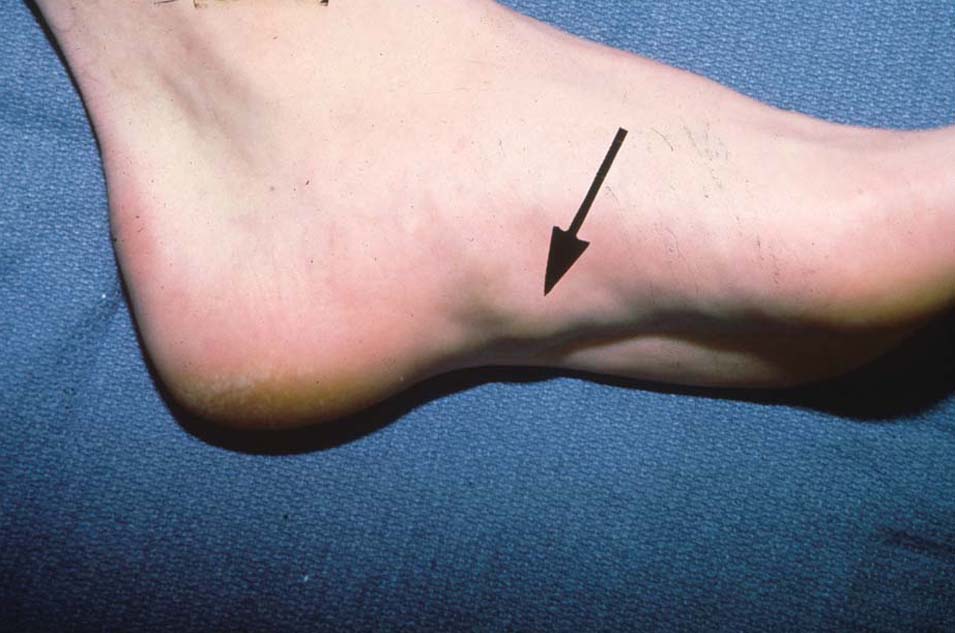 This condition is where a nodule forms on the arch of the foot, grown inside the plantar fascia, which is a group of tissue that runs along the toes to the heel within the foot. This condition can affect either feet or both; it is usually benign but often requires treatment to get better. The most notable sign is a bump on the foot, with or without pain. To determine whether this condition is the cause of bump on bottom of foot, a medical professional will examine the bump, as well as carry out an MRI scan to properly determine its cause.
This condition is where a nodule forms on the arch of the foot, grown inside the plantar fascia, which is a group of tissue that runs along the toes to the heel within the foot. This condition can affect either feet or both; it is usually benign but often requires treatment to get better. The most notable sign is a bump on the foot, with or without pain. To determine whether this condition is the cause of bump on bottom of foot, a medical professional will examine the bump, as well as carry out an MRI scan to properly determine its cause.
Treatments
There are many non-surgical treatments that may prove effective in pain relief associated with plantar fibroma but will likely not cause the growth to diminish or disappear. The following non-surgical options may be offered by your health care professional:
- Steroid injections areused to shrink the growth and reduce pain, although the growth often re-grows.
- Orthotic devices, also known as shoe inserts, can help to relieve pain by removing weight from the fibroma.
- Physical therapy is sometimes used to treat the condition, including the use of anti-inflammatory medication tropically into the fibroma, with no need for an injection.
If the growth increases in size, or begins to produce more pain, then further evaluation from a health care professional may be needed. If pain persists and there're no signs of improvement, then surgery is often used to remove the mass. It is important to note that surgery may lead to a flattening of the arch of the foot, which will require further treatment.
2. Corns and Calluses
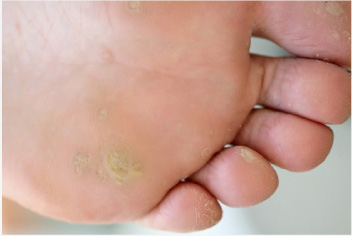 These growths form when the skin attempts to protect itself from pressure and friction, causing hardened, thick layers of skin. Most commonly they form on the toes and feet, but they also appear on the fingers and hands. They can be considered unsightly and many may be embarrassed at their appearance. In most cases for healthy individuals, no treatment is required and simply stopping the cause of the friction will cause the bump on bottom of foot to disappear. Those with conditions affecting their blood flow may have an increased risk of developing complications from calluses and corns, and they should seek the advice of a medical professional.
These growths form when the skin attempts to protect itself from pressure and friction, causing hardened, thick layers of skin. Most commonly they form on the toes and feet, but they also appear on the fingers and hands. They can be considered unsightly and many may be embarrassed at their appearance. In most cases for healthy individuals, no treatment is required and simply stopping the cause of the friction will cause the bump on bottom of foot to disappear. Those with conditions affecting their blood flow may have an increased risk of developing complications from calluses and corns, and they should seek the advice of a medical professional.
Treatment
Surgery can be used to remove the growths, but there are non-surgical options to help, including:
- Moleskin pads, whichcan be used to help provide relief from corns.
- Medicinal patches, which can beused to remove calluses.
- Soaking your feet in warm and soapy water, which softens the corns and/or calluses. This also helps to remove thick skin. A good practice is to rub the callus or corn with a nail file or similar apparatus after soaking to assist in the removal of hardened skin.
3. Plantar Warts
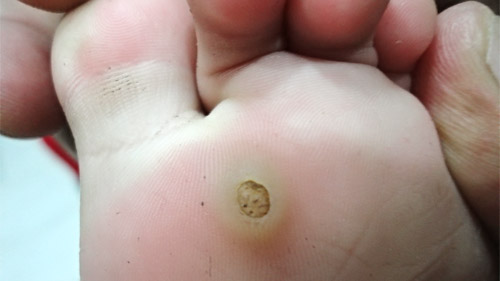 These warts are hold growths that often appear on the balls or heels of the feet, which is where the most pressure is often felt. Plantar warts are generally caused by a virus called human papillomavirus, which enters the body via small breaks and cuts on the bottom of the feet. In many cases, plantar warts are no cause for concern, and generally do not require treatment. If they do cause discomfort or pain, then treatmentsare required to help relieve symptoms.
These warts are hold growths that often appear on the balls or heels of the feet, which is where the most pressure is often felt. Plantar warts are generally caused by a virus called human papillomavirus, which enters the body via small breaks and cuts on the bottom of the feet. In many cases, plantar warts are no cause for concern, and generally do not require treatment. If they do cause discomfort or pain, then treatmentsare required to help relieve symptoms.
Treatments
As mentioned, this condition will usually disappear without the need of intervention; if this does not happen, then the following home treatment methods may be applied:
- Duct tape. Place a small strip of duct tape over the wart and leave it there for around six days. Remove the tape after that and soak the wart in warm, soapy water, then rub it using a nail file or similar apparatus. Repeat this until the wart is gone.
- Over-the-counter wart treatments such as salicylic acid and cryotherapy.
If home remedies prove ineffective, then the following medicinal treatments may be offered once you have paid a visit to a health care professional:
- Liquid nitrogen to freeze the wart off of the foot
- Laser surgery to remove the wart
- Medication to assist the immune system in wart eradication
It is important to remember that even if the treatment proves to be successful, the wart can still reappear.
4. Athlete’s Foot
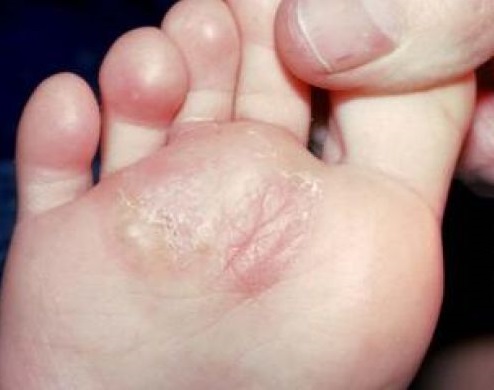 Also known as tinea pedis, this condition is a result of a fungal infection, often beginning in between the toes, and often developing in individuals who have sweaty feet in tight fitting shoes. The condition often causes a rash on the affected area, itching, blisters, ulcers, or occasionally bump on bottom of foot. Some types of this condition, such as the moccasin type, can lead to symptoms similar to eczema to form on the soles and sides of the feet. This condition can be passed person-to-person, via infected floors, clothing, or towels.
Also known as tinea pedis, this condition is a result of a fungal infection, often beginning in between the toes, and often developing in individuals who have sweaty feet in tight fitting shoes. The condition often causes a rash on the affected area, itching, blisters, ulcers, or occasionally bump on bottom of foot. Some types of this condition, such as the moccasin type, can lead to symptoms similar to eczema to form on the soles and sides of the feet. This condition can be passed person-to-person, via infected floors, clothing, or towels.
Treatments
Typically, an anti-fungal ointment, powder, lotion, or spray can be used to treat mild instances of athlete's foot. If these treatments prove ineffective, then stronger medication may be required via prescription and applied to the feet, or taken orally.
5. Foot Blisters
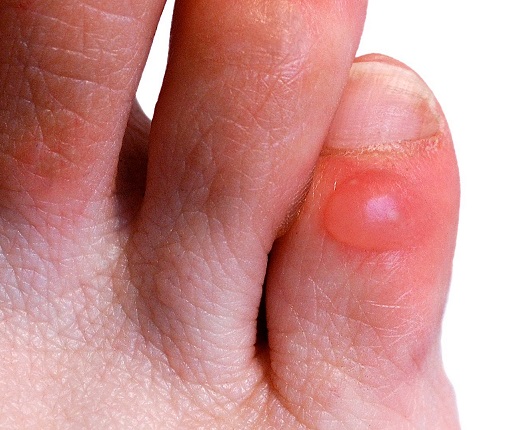 This condition can also cause bumps on the bottom of the foot, which look similar to bubbles. Blisters are a result of too much friction on the foot, often caused by tightly fitting or new shoes, which cause the outer layers of skin to rub against each other, separates, and proceed to fill with liquid.
This condition can also cause bumps on the bottom of the foot, which look similar to bubbles. Blisters are a result of too much friction on the foot, often caused by tightly fitting or new shoes, which cause the outer layers of skin to rub against each other, separates, and proceed to fill with liquid.
Treatments
If the condition is not too painful then it is best advised to not pop the blister, as the outer layer of skin, if un-popped, can help to prevent infections. Ensure that you cover the blister with a plaster, or tape.
